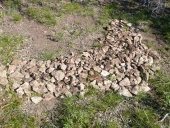




 4
4




SKIP books, get 'em while they're hot!!! Skills to Inherit Property




 2
2




 1
1




 4
4




Nails are sold by the pound, that makes sense.
Soluna Garden Farm -- Flower CSA -- plants, and cut flowers at our Boston Public Market location, Boston, Massachusetts.
 3
3




John Daley Bendigo, Australia The Enemy of progress is the hope of a perfect plan
Benefits of rainfall collection https://permies.com/t/88043/benefits-rainfall-collection
GOOD DEBT/ BAD DEBT https://permies.com/t/179218/mortgages-good-debt-bad-debt
 1
1




 2
2




John Daley Bendigo, Australia The Enemy of progress is the hope of a perfect plan
Benefits of rainfall collection https://permies.com/t/88043/benefits-rainfall-collection
GOOD DEBT/ BAD DEBT https://permies.com/t/179218/mortgages-good-debt-bad-debt




 2
2








tony uljee wrote:We then used what is called MECHANICAL CONCRETE ---if you gogle it shows up the process , we cut out both sidewalls off each tire and used gutter bolts to hold them together --4 holes drilled per tire on site---- back filled with graded rock and stone , and it works--- stops the bulk of the infull from drifting away and might just need topping up after a few years. I had planned doing my driveway like this about 50 meters long---the amount of tires needed at a rough count was 900---
 1
1




Invasive plants are Earth's way of insisting we notice her medicines. Stephen Herrod Buhner
Everyone learns what works by learning what doesn't work. Stephen Herrod Buhner




John Daley Bendigo, Australia The Enemy of progress is the hope of a perfect plan
Benefits of rainfall collection https://permies.com/t/88043/benefits-rainfall-collection
GOOD DEBT/ BAD DEBT https://permies.com/t/179218/mortgages-good-debt-bad-debt






|
I was her plaything! And so was this tiny ad:
permaculture and gardener gifts (stocking stuffers?)
https://permies.com/wiki/permaculture-gifts-stocking-stuffers
|


